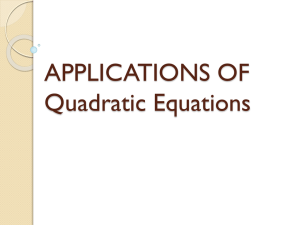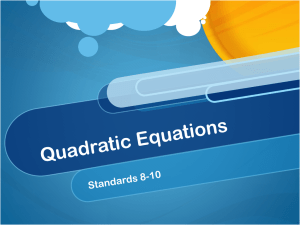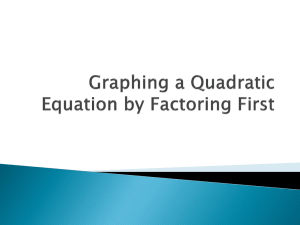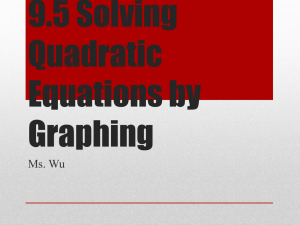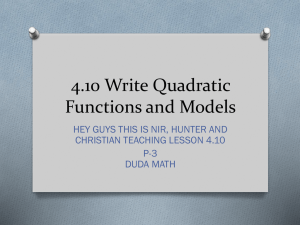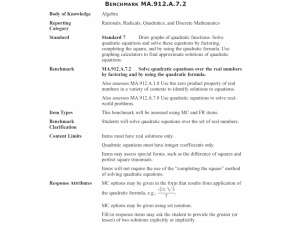doc file
advertisement
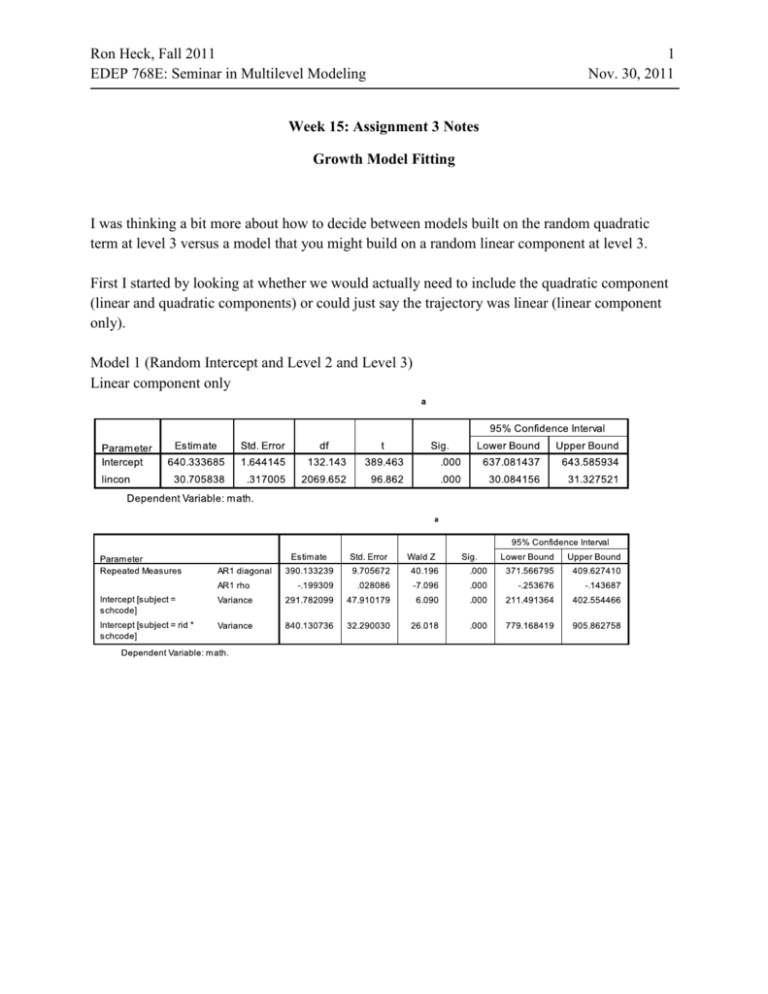
Ron Heck, Fall 2011 EDEP 768E: Seminar in Multilevel Modeling 1 Nov. 30, 2011 Week 15: Assignment 3 Notes Growth Model Fitting I was thinking a bit more about how to decide between models built on the random quadratic term at level 3 versus a model that you might build on a random linear component at level 3. First I started by looking at whether we would actually need to include the quadratic component (linear and quadratic components) or could just say the trajectory was linear (linear component only). Model 1 (Random Intercept and Level 2 and Level 3) Linear component only (EDEP 768) Week 15: Assignment 3 Notes (Growth Model Fitting) 6 parameters tested -2LL = 53507.966 Model 2 (Random Intercept and Level 2 and Level 3) Linear and Quadratic components included 2 (EDEP 768) Week 15: Assignment 3 Notes (Growth Model Fitting) 3 -2 LL = 51,843.804 7 parameters tested We can see that the model with both linear and quadratic components fits better. If we form a delta chi-square we have [-2 LL (M1)] - -2LL(M2)] [53507.966 - 51,843.804 = 1664.162 for 1 df (3.84 chi sq. required) So it is obvious that the second model with both fits the data better. Next I fit Model 3. This model and has a random lincon component at school level (8 parameters estimated) Model 4 has a random quadratic component at level 3 (8 parameters) (EDEP 768) Week 15: Assignment 3 Notes (Growth Model Fitting) 4 We would probably favor Model 4 with the quadratic component random at level 3 based on the fit indices. For the same number of free parameters (8) the fit is better ( Model 3 = AIC = 51,803.608 and Model 4 = 51,788.224). We favor smaller values of AIC. Finally, I compare Model 5, which is the final model we ran last night with quadcon (16 parameters estimated) Model 6 is final model we ran last night but with lincon as random lat level 3 (16 parameters) (EDEP 768) Week 15: Assignment 3 Notes (Growth Model Fitting) 5 We would still probably favor Model 5 with the random quadratic component at level 3 over Model 6 with the random linear component, again based on the fit indices (AIC and BIC are smaller). So this would give you one way to justify that sequence of models that we built using some model-fitting criteria that are available. I think we would have to conclude that the trajectories are quadratic (containing a curvilinear shape suggesting that growth slows). We would also suggest probably building the model on the random quadratic component as the better of the two strategies in this case. Hope this helps.



